C
Christian ReedSep 23, 2025
How to resolve oPE05 error on YASKAWA J1000 CIMR-JC Controller?
- FfosterjustinSep 23, 2025
Install the required option unit or correct the values set to b1-01 and b1-02.
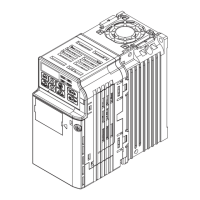
How to resolve oPE05 error on YASKAWA J1000 CIMR-JC Controller?
Install the required option unit or correct the values set to b1-01 and b1-02.
What to do if there is Overcurrent in YASKAWA Controller?
Overcurrent in the YASKAWA Controller can occur due to a short circuit or ground fault on the drive output side, an excessively heavy load, short acceleration/deceleration times, incorrect motor data or V/f pattern settings, or switching a magnetic contactor at the output. To resolve this, check the output wiring and motor for shorts or broken insulation, inspect the machine for damages, verify the drive parameter settings, and check the output contactor sequence.
Why is there DC Overvoltage in my YASKAWA J1000 CIMR-JC?
DC Overvoltage in the YASKAWA Controller can occur if the DC bus voltage rises too high due to a short deceleration time, disabled stall prevention, a broken braking chopper/resistor, unstable motor control, or too high an input voltage. To fix this, increase the deceleration time, enable stall prevention via parameter L3-04, ensure the braking resistor and chopper are working, check motor parameter settings, and verify the power supply voltage meets the drive's specifications.
What causes Motor Overload in YASKAWA Controller?
Motor Overload in the YASKAWA Controller is caused by a motor load that is too heavy, operation at low speed with a heavy load, short acceleration/deceleration cycle times, or an incorrectly set motor rated current. To solve this, reduce the motor load, use a motor with external cooling and set the correct motor in parameter L1-01, check the sequence, and check the rated current setting.
What to do if there is Drive Overload in YASKAWA J1000 CIMR-JC?
Drive Overload in the YASKAWA Controller can happen if the load is too heavy, the drive capacity is too small, or there's too much torque at low speed. To resolve this, check the load, ensure the drive is adequately sized for the load, and reduce the load or increase the drive size if operating at low speeds.
What does Controller Undervoltage mean on YASKAWA J1000 CIMR-JC Controller?
The drives controller power supply voltage is too low. Cycle power to the drive and check if the fault reoccurs. Replace the drive if the fault continues to occur.
What to do if YASKAWA J1000 CIMR-JC Controller shows l Circuit ult?
There is no terminal board connected to the control board. Check if the terminal board is installed properly, uninstall and reapply the terminal board, or change the drive.
What causes DC Charge Circuit Fault in YASKAWA J1000 CIMR-JC Controller?
The charge circuit for the DC bus is broken. Cycle power to the drive and check if the fault reoccurs. Replace the drive if the fault reoccurs.
Why does my YASKAWA Controller show al Fault?
A forward and reverse command were input simultaneously for longer than 500 ms. This alarm stops a running motor. Check the sequence and make sure that the forward and reverse input are not set at the same time.
Why am I getting Output Phase Loss on my YASKAWA J1000 CIMR-JC?
Output Phase Loss in the YASKAWA Controller is caused by a disconnected output cable, damaged motor winding, or loose wires at the drive output. It can also occur if the motor is too small (less than 5% of drive current). Check the power supply and ensure that all cables are properly fixed to the correct terminals.
| Series | J1000 |
|---|---|
| Control Method | V/f Control |
| Overload Capacity | 150% for 60 seconds |
| Frequency Range | 0.1 to 400 Hz |
| Humidity | 95% RH or less (non-condensing) |
| Cooling Method | Fan Cooled |
| Enclosure Rating | IP20 |
| Type | Variable Frequency Drive |
| Output Frequency | 0.1 to 400 Hz |
| Protection Features | Overcurrent, Overvoltage, Undervoltage, Overheat |
| Communication | RS-485 |
| Operating Temperature | -10°C to +50°C |
| Storage Temperature | -20°C to +60°C |
| Altitude | 1000m or less above sea level |
| Power Supply | Single-phase or Three-phase |
| Input Voltage | 200-240V or 380-480V |
| Output Voltage | 0 to Input Voltage |
Important warnings and precautions for safe operation and installation of the drive.
Specific hazards like electrical shock, burns, and equipment damage with necessary precautions.
Explains the connections for both main power and control circuits, referencing diagrams and terminal layouts.
Details terminal types, wire gauges, fuse selection, and specific main/control circuit terminal functions.
Outlines the basic sequence of steps for setting up and commissioning the drive, including initial power-on.
Lists common faults and alarms, their causes, and corrective actions for drive issues.
Details specific fault conditions like overvoltage, undervoltage, and operator programming errors (oPE).
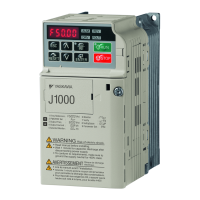



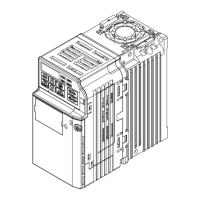
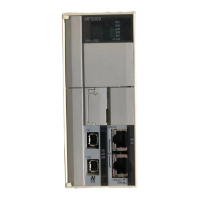
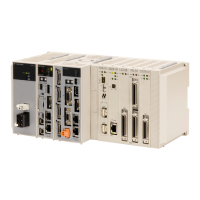





